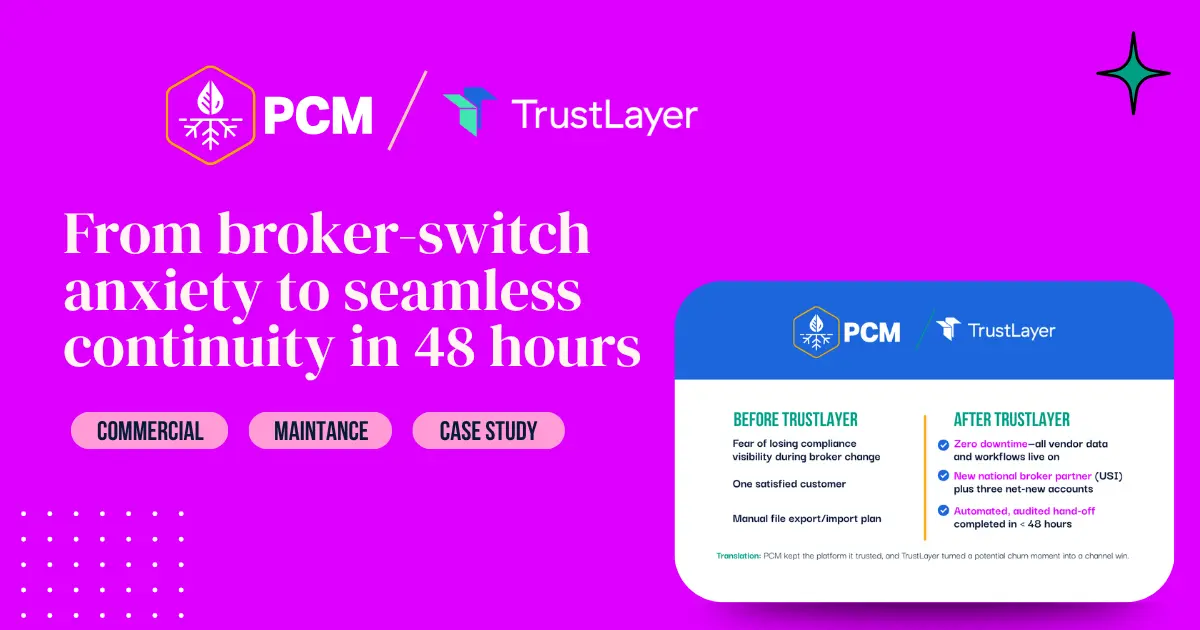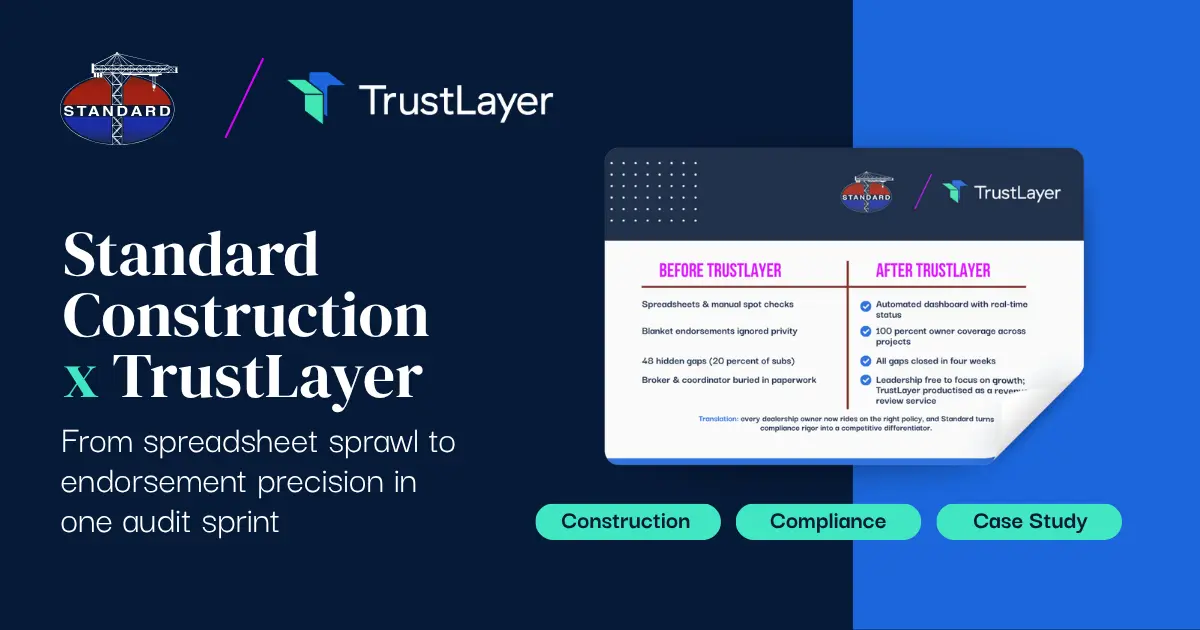What's the Difference Between Occurrence & Claims-Made Insurance?

Understanding the nuances of insurance can be complex, especially when it comes to different types of coverage. Two common types of liability insurance are occurrence and claims-made policies. While both serve the purpose of protecting individuals and businesses from potential liabilities, they operate in distinct ways. This article will explore the differences between these two types of insurance, enabling you to make informed decisions about your coverage needs.
Defining Occurrence Insurance
Occurrence insurance is a type of liability coverage that protects the insured against claims arising from incidents that occur during the policy period, regardless of when the incident occurred. This means that if an event occurs while the policy is active, the insurer will cover the claim, even if it is reported years later. This feature is particularly beneficial for businesses that may not be immediately aware of potential liabilities, such as those in the construction or healthcare industries, where injuries or damages can surface long after the fact.
How Occurrence Insurance Works
To illustrate how occurrence insurance functions, consider a scenario where a business has an active policy from 2020 to 2021. If a customer is injured on the premises in 2020 and files a claim in 2023, the occurrence policy will still provide coverage. The key factor is that the incident occurred while the policy was in effect, allowing the insured to have peace of mind even after the policy had expired. This aspect of occurrence insurance can be particularly advantageous for businesses that may face delayed claims, such as those in the service industry, where customer interactions can lead to unforeseen liabilities that may not be reported until much later.
Benefits of Occurrence Insurance
One of the primary advantages of occurrence insurance is the long-term protection it offers. Since claims can be filed years after the event, businesses and individuals can feel secure knowing they are covered for past incidents. Additionally, this type of insurance can simplify the claims process, as there is no need to worry about whether the policy was active at the time of the claim. Furthermore, occurrence insurance can enhance a business's reputation by demonstrating a commitment to accountability and customer safety, which can be a significant factor in attracting new clients and retaining existing ones. The peace of mind provided by such coverage enables business owners to focus on growth and innovation, rather than being hindered by the potential of future claims related to past activities.
Understanding Claims-Made Insurance
Claims-made insurance, on the other hand, is structured differently. This type of policy provides coverage for claims only if both the incident occurs and the claim is made while the policy is active. This means that if a claim is filed after the policy has expired, the insurer will not cover it, even if the incident occurred during the policy period.
How Claims-Made Insurance Works
For example, if a professional has a claims-made policy that runs from 2020 to 2021, they will be covered for claims made during that time, regardless of incidents that occurred during the same period. However, if a claim arises in 2023 for an incident that took place in 2021, the policyholder would not be protected unless they had purchased an extended reporting period (ERP) or tail coverage. This aspect of claims-made insurance makes it crucial for policyholders to be aware of their coverage's timeline and to consider their options when their policy is nearing expiration carefully.
Benefits of Claims-Made Insurance
One of the significant benefits of claims-made insurance is often lower premiums compared to occurrence policies. This can make it an attractive option for professionals and businesses seeking to reduce their insurance costs. Additionally, claims-made policies can be tailored to meet specific needs, providing flexibility in coverage options. For instance, professionals in fields such as healthcare or law may find that claims-made insurance better suits their risk profiles, as they can tailor their coverage limits and conditions to their unique practice areas and client interactions.
Moreover, claims-made policies can encourage proactive risk management. Since these policies require that claims be reported while the policy is active, policyholders may be more inclined to implement measures that minimize the likelihood of claims being filed. This can lead to better practices within their profession, fostering a culture of accountability and diligence. As a result, not only do they benefit from financial savings, but they also enhance their professional reputation and client trust by demonstrating a commitment to quality and risk mitigation.
Key Differences Between Occurrence and Claims-Made Insurance
While both occurrence and claims-made insurance serve the purpose of protecting against liability, the fundamental differences between them can significantly impact coverage and costs. Understanding these differences is crucial for making informed decisions about insurance needs.
Coverage Timeline
The most notable difference lies in the timeline of coverage. Occurrence policies cover incidents that happen during the policy period, regardless of when the claim is filed. In contrast, claims-made policies only cover incidents that occur and are reported while the policy is active. This distinction can lead to gaps in coverage if not correctly managed. For instance, if a policyholder has a claims-made policy and allows it to lapse, any incidents that occurred during the previous coverage period but are reported after the policy has expired will not be covered. This can be particularly concerning in industries where claims may arise long after the service has been rendered, such as in professional services or healthcare.
Claims Reporting
Another critical difference is how claims are reported. With occurrence insurance, the focus is on when the event took place, while claims-made insurance requires that the claim be made during the policy period. This can create challenges for policyholders who may not be aware of an incident until it has occurred long after the fact. For example, in the case of medical malpractice, a patient may not realize they have been harmed until years after a procedure. If the healthcare provider has a claims-made policy, they could find themselves without coverage if the claim is filed after the policy has expired. This emphasizes the importance of maintaining continuous coverage and being proactive in managing insurance policies to avoid potential pitfalls.
Cost Implications
Cost is often a key factor in deciding between these two types of insurance. Generally, occurrence policies tend to have higher premiums due to their broader coverage. Claims-made policies, being more limited in scope, often come with lower premiums. However, policyholders should consider the potential costs of gaps in coverage when opting for a claims-made policy. Additionally, many claims-made policies may require the purchase of "tail coverage," which extends the reporting period for claims after the policy has ended. This can add to the overall cost, potentially negating the initial savings from lower premiums. Businesses and professionals need to assess their risk exposure and the likelihood of claims arising from their operations, making a well-informed choice that aligns with their financial and operational needs.
Choosing the Right Insurance for Your Needs
Deciding between occurrence and claims-made insurance depends on various factors, including the nature of the business, the level of risk, and budget considerations. Here are some tips to help guide the decision-making process.
Assessing Risk
Understanding the specific risks associated with a business or profession is crucial. For instance, industries with a higher likelihood of claims, such as healthcare or construction, may benefit more from occurrence policies due to their long-term coverage. Conversely, lower-risk professions may find claims-made policies sufficient and more cost-effective. Additionally, it is essential to consider the historical claims data in your industry; analyzing trends can provide insights into potential future liabilities. Factors such as the size of the business, the number of employees, and the geographical location can also influence the risk profile, making a thorough assessment essential for informed decision-making.
Evaluating Budget
Budget constraints often play a significant role in insurance decisions. While occurrence policies may offer broader protection, they typically come with higher premiums. Evaluating the financial implications of each option can help determine which policy aligns best with the budget while still providing adequate coverage. It’s also wise to factor in potential out-of-pocket costs associated with claims, as these can vary significantly between policy types. Furthermore, consider the long-term financial impact of each policy. In contrast, a claims-made policy may initially appear more affordable. Still, the costs can accumulate over time, especially if you need to purchase tail coverage when switching providers or retiring from practice.
Consulting with Professionals
When in doubt, consulting with an insurance professional can provide valuable insights. These experts can help assess individual needs, evaluate risks, and recommend the most suitable coverage options. Their expertise can be particularly beneficial in navigating the complexities of different insurance types. Moreover, they can assist in comparing quotes from various insurers, ensuring that you not only find the best price but also the most comprehensive coverage. Building a relationship with an insurance advisor can lead to ongoing support as your business evolves, allowing for adjustments to your coverage as new risks emerge or as your business grows.
Understanding Policy Terms
Another critical aspect of choosing the right insurance is understanding the specific terms and conditions of each policy. Policies can vary widely in their definitions of coverage, exclusions, and limits. For example, some occurrence policies may cover claims arising from incidents that occurred during the policy period, even if the claim is filed years later. In contrast, claims-made policies only cover claims made during the active policy period. It is essential to read the fine print and ask questions about any clauses that may seem ambiguous. This diligence can prevent unpleasant surprises when it comes time to file a claim, ensuring that you are fully aware of what is and isn’t covered under your chosen policy.
Common Misconceptions
Despite the clear distinctions between occurrence and claims-made insurance, several misconceptions persist. Addressing these can help individuals and businesses make more informed decisions regarding their coverage.
Myth: Claims-Made Policies Are Always Cheaper
While it's true that claims-made policies often have lower premiums, this doesn't mean they are always the more cost-effective option. The long-term implications of potential gaps in coverage can lead to significant out-of-pocket expenses if claims arise after the policy has expired. Additionally, as claims-made policies require the insured to report incidents during the policy period, any failure to do so can result in denied claims, further complicating financial outcomes.
Moreover, the cost of claims-made policies can increase over time, especially if the insured's risk profile changes or if the insurer raises premiums due to market conditions. It's crucial for policyholders to regularly review their coverage and assess whether the initial savings are worth the potential risks associated with claims-made policies.
Myth: Occurrence Policies Are Always Better
While occurrence policies provide broader coverage, they may not be necessary for every individual or business. For some, the lower cost and flexibility of claims-made policies can be more advantageous, especially if they have a lower risk of claims. Furthermore, occurrence policies can sometimes lead to over-insurance, where businesses pay for coverage that exceeds their actual needs, resulting in wasted resources.
It's also important to consider the nature of the business and the industry in which it operates. Certain professions, particularly those with a higher likelihood of claims, may benefit more from occurrence policies. In contrast, others may find that claims-made options align better with their financial strategy and risk management approach. Tailoring insurance coverage to fit specific operational realities is key to optimizing protection without unnecessary expenditure.
Myth: Once a Policy is Purchased, It’s Set in Stone
Many people believe that once they choose a policy type, they cannot change it. In reality, businesses can often switch between occurrence and claims-made policies as their needs evolve. However, it’s essential to understand the implications of such changes and ensure continuous coverage during the transition. This process may involve a thorough review of existing policies and potential new options, which can be complex and time-consuming.
Additionally, switching policies may require the insured to undergo a new underwriting process, which could reveal changes in risk that might affect premiums. As businesses grow and their operations evolve, they may discover that their insurance needs also change. Therefore, maintaining an open dialogue with insurance agents and regularly reassessing coverage can help ensure that businesses remain adequately protected as they adapt to their evolving circumstances.
Conclusion
Understanding the differences between occurrence and claims-made insurance is vital for anyone looking to protect themselves or their business from liability. Each type of insurance has its unique features, benefits, and drawbacks. By assessing individual needs, evaluating risks, and consulting with professionals, individuals and businesses can make informed decisions that best suit their circumstances.
Ultimately, the choice between occurrence and claims-made insurance will depend on the specific situation and requirements. Whether opting for the long-term protection of occurrence policies or the cost-effective flexibility of claims-made options, being informed is the first step toward effective risk management.
As you navigate the complexities of occurrence and claims-made insurance, remember that managing your certificates of insurance (COIs) efficiently is equally crucial for modern risk management. TrustLayer is revolutionizing the way businesses handle this administrative challenge, offering a best-in-class COI tracker that automates the tedious process of document collection, verification, and management. Embrace the future of risk management and join the hundreds of thousands of companies that have streamlined their compliance workflows with TrustLayer. Don't let outdated methods hold you back. Schedule a time to speak with our team and learn how you can enhance your risk management practices today.
















